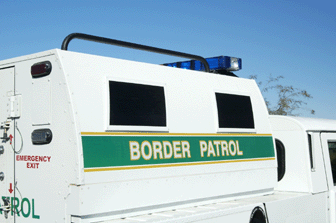US Immigration |
|||||||
| Posted 8/22/2007 | |||||||
| LEGAL NOTES / By REUBEN S. SEGURITAN | |||||||
Employer Crackdown? |
|||||||
|
|||||||
|
Discrepancies in social security numbers may be caused by a
clerical error or by the failure of the employee to register her
change of name after her marriage. The employer must check its records to ascertain the reason for the discrepancy and if it’s a clerical error, it must correct the error with the SSA. It has to document the manner, date and time of its verification. |
|||||||
|
If the error is not clerical, the employer must ask the employee
to confirm that his name and social security number in the
employer’s file are correct. The employer must then inform the
employee of the “no match letter” and advise him to clarify the
discrepancy with the SSA no later than 90 days from the receipt
date. If there is a notice of discrepancy from the DHS, the employer must contact the DHS and try to resolve questions about the employee’s immigration status or employment authorization. If the issue cannot be resolved with the SSA or DHS within 90 days of receipt of the letter, the employer must then require the employee to complete a new Form I-9 within 93 days of receipt of the notice. In completing the form, the employee will be required to submit documents with a photograph to prove his identity and employment authorization. |
 |
||||||
|
|
|||||||
|
If the discrepancy is not resolved within 93 days the employer will have to terminate the employee or face criminal or civil penalties. If the employer follows the above procedures, it will avoid liability even if the employee is in fact unauthorized to work. This is the so called “safe harbor” that is mentioned in the regulation. |
|||||||
|
The employer will be at risk if it is found to have constructive
knowledge of the lack of immigration status of the employee but
fails to take reasonable steps to address the issue. Constructive
knowledge exists under the following situations: (1) When the
employee requests the employer sponsorship for a labor certification
or visa petition, (2) when the employer receives a “no match letter”
and (3) when the employer receives a notice from the DHS that the
employee’s authorization card does not match the records of the DHS.
|
|||||||
|
|||||||
|
Terms of Use. Privacy Policy. Disclaimer.
|





 has been practicing law for over 30 years and is included in the Marquis Who’s Who in American Law. A former law editor and professor, he is also the author of a book on immigrant experiences. He has spoken in international and national conventions and has been interviewed on radio and television, including the ABC Nightly News. He has participated in meetings with White House staff and the Immigration Commissioner to discuss immigration reforms. For his community service and advocacy, he has received numerous awards in the U.S. and abroad. For more information, you may log on to his website at www.seguritan.com or call (212) 695-5281
has been practicing law for over 30 years and is included in the Marquis Who’s Who in American Law. A former law editor and professor, he is also the author of a book on immigrant experiences. He has spoken in international and national conventions and has been interviewed on radio and television, including the ABC Nightly News. He has participated in meetings with White House staff and the Immigration Commissioner to discuss immigration reforms. For his community service and advocacy, he has received numerous awards in the U.S. and abroad. For more information, you may log on to his website at www.seguritan.com or call (212) 695-5281